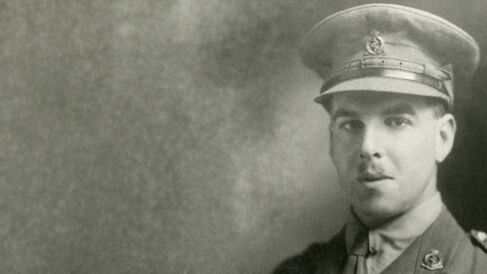Rudolph Peters on Hopkins

On the subject of the Department's buildings and conditions, it is worth recalling the words of Sir Rudolph Peters on the unrivaled research work that Hopkins and his colleagues carried out in the original building on Corn Exchange Street, shared with Physiology, to the effect that, in retrospect, this seemed astonishing because the conditions were "by any standards appalling." To give a flavour he observed that "Every room, I suppose, except that of Professor John Newport Langley and that in which Hopkins worked with Sydney W. Cole, was a passage. As will always be the case, it was the people that counted - there was a unique research atmosphere - so much so that Edward Mellanby, who became the second secretary of the MRC said that any young man entering that laboratory was 'doomed to research'. I could elaborate but I will confine myself to the cellars. At the bottom of the steps, there was a darkish room containing some of Hopkins' rats. Turning left there was a slit of a room, quite dark, where Archibald Vivian Hill worked, and going through this one came to the small cellar for the distinguished neurophysiologist Keith Lucas who was responsible for the aerial compass [during the First World War when he worked at the Royal Aircraft Establishment]. Going back to the central room, at the bottom of the stairs, there was a cave for the frogs, extensively used both in class and also in muscle biochemistry, and beyond this the incredible centrifuge - the only one we had, which took up a cubic space of 12 ft. each way, and was run by a gas engine."
Of Hopkins, Peters observed "I have never known anyone who would listen so attentively to a person who was talking to him as the Professor; this was equally true for the young or the old. He was astonishingly receptive and able to visualise the future of what you were saying. In spite of his busy life as Tutor, we found in the Part II class that he had not only read the literature but that he had, as he said, 'appraised it'. He was a remarkable mixture of a critical mind with immense human sympathy, so that in a way he was often at war with himself. During the morning, when I might want to consult him on some point connected with the laboratory, large numbers of folk from the University would collect outside his room, many of them to weep on his shoulder. He was always sympathetic. I like the picture of him best which was published in my Hopkins' Memorial Lecture. The peering look is so characteristic. There is one story of the Professor, which I only heard four years ago, from Professor Charles Glen King, in a restaurant in Zurich. King isolated vitamin C independently of Albert Szent-Györgyi, and is a Professor in the USA. He was in the laboratory about 1929 for a period. One day in the Library, which in those days had some bookcases sticking out into the room, he heard someone pacing up and down behind one of the cases. He was surprised to find that this was Hopkins, with his hands behind his back, characteristically. The Professor said to him, 'You know, King, I should much like to feel that I had done something really important…' The next day came the announcement of his Nobel Prize."
